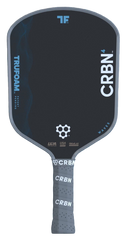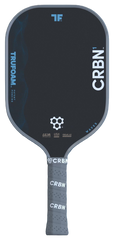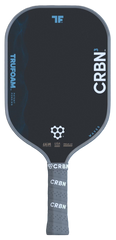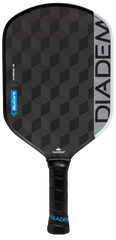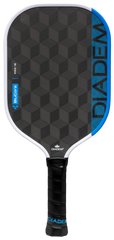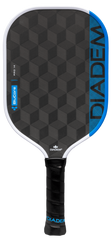Are you ready to jump into the thrilling world of pickleball? Whether you’re picking up a paddle for the very first time or aiming to sharpen your skills, these top 10 tips will have you playing like a pro in no time.
From mastering your serve to getting a grip on the kitchen and perfecting your footwork, this guide has all the essential insights you need as a beginner. So, get ready to elevate your game, improve your techniques, and most importantly, have a blast on the court!
Top 10 Pickleball Tips for Beginners: Start Playing Like a Pro
If you’re a beginner ready to jump into the exciting world of pickleball, mastering the essential tips and techniques is key to your success on the court. By focusing on improving your gameplay, understanding the rules, and developing a solid strategy, you’ll be playing like a pro before you know it.
Don’t underestimate the importance of practice drills and warm-ups; they’ll not only boost your skills but also make sure you enjoy every match you play.
Let’s dive into the top 10 tips that will help you elevate your game while having a blast!
1. Master the Serve
The serve is one of the most crucial skills in pickleball, and it can really set the tone for your entire game, especially if you’re just starting out. By mastering different serving techniques, like the underhand serve or the topspin serve, you can boost your chances of scoring points right from the first shot.
Effective serving does more than just put the ball in play; it establishes a strong defensive position and lets you dictate the flow of the game. Getting your paddle grip and placement right is essential for maintaining both control and power in your serve.
For beginners, practicing the continental grip is a game changer—it helps you achieve a consistent follow-through and makes lunging into your shots feel natural. Consider working on drills like target serving, where you aim for specific areas of the service box. This can really enhance your accuracy and precision.
Don’t forget about the toss drill, either! Tossing the ball to the right height consistently can refine your serving mechanics and boost your confidence during gameplay. Remember, a well-executed serve can catch your opponents off guard and give you a valuable edge when it comes to scoring.
2. Learn How to Dink
Learning how to dink is crucial for you as a beginner wanting to shine in pickleball. It sets you up for strategic play and gives you better control at the net. When you execute a well-timed dink shot, you can change the game’s momentum and push your opponents into a defensive stance.
To nail that dink shot, you need to grasp the mechanics behind it. This includes having the right grip and swing technique, as well as mastering your court positioning and footwork. Focus on standing close to the non-volley zone line; this way, you can react quickly to incoming shots. Practicing those sideways steps helps you get into the right position, allowing for better angles and control.
Engaging in drills that mimic game situations—like practicing with a partner and targeting specific spots on the court—can really boost your ability to read your opponents and react on the fly. In the end, consistent practice with your footwork and shot placement will help you develop that reliable dink shot that can turn the tide of any match.
3. Practice Your Footwork
Effective footwork is really the backbone of a successful pickleball game, especially if you’re just starting out and working on your coordination and agility on the court. By honing in on your movement and positioning, you’ll boost your ability to react quickly to your opponent’s shots.
Incorporating specific footwork drills into your practice routine can make a huge difference in these skills. For example, ladder drills can ramp up your foot speed and coordination, making it much easier for you to navigate the court. Shadowing exercises, where you mimic movements without a ball, are great for building muscle memory and improving your reaction times.
If you stick to these drills regularly, you’ll see a significant improvement in your ability to move fluidly and swiftly during matches, helping you get into the best position to respond effectively to all kinds of shots.
4. Work on Your Backhand
A solid backhand is a key part of your pickleball game, and it can really take your overall skills to the next level, especially if you're just starting out. By putting some time into practicing your backhand shot, you can gain more consistency and control, which will definitely add depth to your game strategy.
To start improving your backhand technique, focus on your grip. It should be relaxed yet firm, giving you better maneuverability. Next, pay attention to your stance; position your feet shoulder-width apart and bend your knees slightly to help with balance.
Don’t forget about the follow-through; it plays a big role in determining the trajectory and power of your shot. Practicing drills—like hitting against a wall or with a partner using different ball speeds—can really boost your confidence and help you develop your skills. Incorporating these techniques will not only sharpen your execution but also encourage a more strategic approach to each game.
5. Keep Your Shots Low and Controlled
Keeping your shots low and controlled is a smart move for beginners in pickleball. It really helps reduce your opponent's chances of making a powerful return. By focusing on the angle of your shots and maintaining control, you get to dictate the pace of the game and create those winning rally opportunities.
Mastering shot selection, like knowing when to throw in a slice or a drop shot, can seriously up your game. For example, using a slice can change the ball's trajectory, making it tougher for your opponents to predict and react. And when your opponent is deep in their court, a well-timed drop shot can really catch them off guard and give you that strategic edge.
By consciously picking the right shot at the right moment, you can manipulate the angles and dynamics of each rally, ultimately leading to more successful outcomes on the court.
6. Communicate with Your Partner
Effective communication with your partner is key, especially when you're playing doubles. It really helps with teamwork and boosts your awareness on the court. By chatting about strategies and calling out plays, you can create a stronger partnership and take your pickleball game to the next level.
Using clear verbal signals, like shouting "mine" or "yours", can clear up any confusion during those crucial moments, making sure you both are on the same page with your decisions.
Don’t forget about non-verbal cues, too! Hand gestures can quickly convey a planned formation or a sudden change in tactics. For example, raising your hand might mean you're going for an aggressive shot, while a subtle nod could indicate it's time to reposition defensively.
This kind of cohesive communication not only strengthens your bond with your teammate but also boosts your collective awareness of what's happening on the court, leading to better gameplay and more success.
7. Stay in Your Position
Maintaining proper positioning on the court is crucial for you as a beginner to develop your gameplay and defensive skills. By sticking to your designated area and keeping an eye on your partner's position, you can effectively cover the court and respond to your opponent's shots.
To boost your court awareness, you should always be assessing your opponent's movements and anticipating their potential shots. This means you shouldn't just stand there waiting; instead, actively adjust your stance based on cues, like how your opponent grips the racket or their body orientation.
For example, if you notice your opponent shifting their weight forward, that's a clear sign they might be getting ready to hit the ball, so you should get ready for an incoming shot. Practicing lateral movement will help ensure you’re always prepared to defend against those tricky angles, minimizing any gaps in your coverage.
By honing these strategies, you'll significantly elevate your overall performance and adaptability on the court.
8. Understand the Importance of the Kitchen
Understanding the importance of the kitchen is crucial for you as a beginner because it shapes your shot strategies and helps you follow the game’s rules. When you know when and how to approach this essential area, you can boost your net play and make more effective shots.
The kitchen, or the non-volley zone, stretches seven feet from the net on either side, so you need to be careful not to step inside it while volleying. This rule is all about encouraging strategic gameplay and making you think more about your shot selection.
For example, choosing drop shots that land just beyond the kitchen line instead of going for aggressive volleys can really change the game for you. It allows you to take control of the net and set the pace of the match. Plus, understanding how to use the kitchen effectively doesn’t just improve your own performance; it also helps with teamwork by getting everyone to coordinate their movements and coverage.
9. Utilize Soft Shots
Utilizing soft shots like drop shots and lobs can truly be a game-changer for you as a beginner looking to boost your overall strategy and keep your opponents on their toes. By adding these shots to your toolkit, you can mix up your gameplay and create some strategic advantages.
Soft shots work wonders when you place them just right to exploit gaps in your opponent’s defense. For instance, throwing in a drop shot can really disrupt your rival’s rhythm, forcing them to scramble to the net, while a well-timed lob can push them back, giving you a chance for a powerful follow-up shot.
Not only do these techniques add variety to your game, but they also help you develop your tactical awareness. Think about using soft shots when you notice your opponent’s positioning or when you want to take control of the game’s pace.
Mastering these techniques can equip you with invaluable skills that can turn the tide in those nail-biting matches.
10. Have Fun and Keep Practicing
Don’t forget to have fun and keep practicing! The enjoyment of pickleball is what really fuels your improvement as a player. Embracing a positive mindset and connecting with other players can create some unforgettable experiences and help build a sense of community.
When you participate in games, you're not just enhancing your skills; you're also building friendships. Each match can turn into a social gathering filled with laughter and teamwork. By focusing on the joy of play instead of just the competitive outcomes, you can create a supportive environment that nurtures everyone’s growth.
Your journey through pickleball is a fantastic chance to learn from others, share techniques, and celebrate victories together—no matter how small they may be. Remember, every session is not just about sharpening your game; it’s also about connecting with fellow enthusiasts who share your passion. That makes each practice feel truly worthwhile!
Frequently Asked Questions
What is pickleball and why is it becoming so popular?
Pickleball is a fun and fast-paced paddle sport that combines elements of tennis, badminton, and ping pong. It is gaining popularity because it is easy to learn, can be played by people of all ages, and provides a great full-body workout.
What are the top 10 pickleball tips for beginners?
1. Get familiar with the rules and court dimensions. 2. Invest in a good quality paddle. 3. Practice your grip and swing technique. 4. Learn to control the ball with soft shots. 5. Work on your footwork and positioning. 6. Communicate with your partner and develop a strategy. 7. Focus on keeping the ball in play rather than hitting hard shots. 8. Stay calm and patient during a rally. 9. Keep your eye on the ball at all times. 10. Have fun and enjoy the game!
How can I improve my hand-eye coordination for pickleball?
One great way to improve hand-eye coordination for pickleball is to practice hitting a ball against a wall. This will help you to better anticipate the ball's movement and improve your reaction time. You can also try using a smaller paddle or a larger ball to challenge yourself.
Do I need to be in good shape to play pickleball?
Pickleball can be played by people of all ages and fitness levels. While it does require some physical activity, the game can be modified to suit your abilities. As you continue to play, you will naturally improve your fitness and endurance.
How do I find people to play pickleball with?
You can find people to play pickleball with by joining a local pickleball group or club, attending pickleball events and tournaments, or simply asking friends and family to join you for a game. You can also use online platforms to connect with other pickleball players in your area.
What are some common mistakes that beginners make in pickleball?
Some common mistakes that beginners make in pickleball include hitting the ball too hard, failing to communicate with their partner, and not moving to the most strategic position on the court. It's important to focus on control and placement rather than power when starting out in pickleball.
